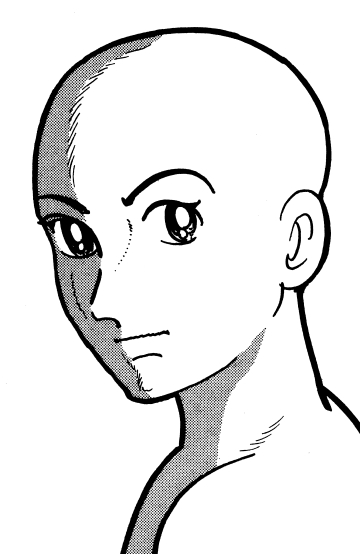Vertical Inc.: An Introduction
 This went out in our newsletter today, and I thought I'd reprint it here.
This went out in our newsletter today, and I thought I'd reprint it here.-------------------
This is the first in a series articles introducing our Pacific Dreams Bookstore customers to some of the publishing houses we work closely with. This issue’s article is on Vertical Publishing, which has brought us Saying Yes to Japan, Naoko and A Rabbit’s Eyes, with more titles on the way. Vertical is a relatively new company, but has had a certain influence on the growing interest in modern Japanese fiction in the U.S. We spoke with Anne Ishii, Vertical’s Director of Marketing and Publicity, about Vertical and publishing Japanese books in English, and here is what she told us.
Vertical was founded in 2001, and published its first books in 2003. With only four full time employees one wonders when there is time to sleep. The number of titles released every year is slowly rising, from nine in 2003, to 20 plus planned for next year. Their best selling title was probably Koji Suzuki’s Ring, thanks partially to interest generated by the Japanese and American movie versions, but at the present time the most consistent best seller is the Buddha series written by Osamu Tezuka.
Even though publishing fiction in English from the original Japanese would appear to be a fairly narrow field, the ways in which a title makes the transformation and trip from Japan are quite varied. In some cases Vertical will approach the Japanese author to begin discussions of bringing a title to the US, and sometimes it’s the other way around. Sometimes an English translation is already written before negotiations begin, and other times a translator needs to be hired once the agreement is made. (Imagine translating an entire novel, and then it never getting published!) Often there are many processes happening. Translation, editing, promotion, and layout and design may all be happening at the same time, and a stall in any of these areas can delay the entire project. (Speaking of design, it is really worth mentioning the amazing covers all done by Art Director, Chip Kidd. You will find yourself placing your Vertical books with the front facing out on you bookshelf to see the consistently stylish covers.)
Sometimes it is the case that a translator will approach the publishing house with a finished translation, and the process will start from there. Other times Vertical will look for a translator once the negotiations with the author’s side are settled. Like PDI, Vertical is always looking for talented bilingual individuals. Here are a couple helpful hints to get hired to work in literary translation: 1) don’t tell the publisher that you don’t know their books because you are into more “serious literary stuff” and “don’t like genre fiction” and 2) don’t tell the publisher that you thought their translation of a certain title could have been better. As Anne says, “that’s like trying to get a job by slapping the prospective publisher”.
As logic would dictate, Vertical goes ahead with books that are going to translate well into English, without cultural topics or issues that an American reader will be thrown by. Naturally, if the scope of a book is unappealing or its contents confusing to all but a very small sliver of the American market, then the title is probably not worth pursuing.
Vertical has also published a few of titles from the godfather of manga, Osamu Tezuka. Graphic novels present new challenges in translation. Unlike a novel, where you work with only words on a blank page, with graphic novels the publisher must fit (in this case) English where Japanese once stood. Spacing can be a difficult issue. On top of that the rhythm of the work can be compromised, as sentence structures in Japanese are very different in English. Translating so that the pacing as well as the content of the partitioned bubbles to match with the original Japanese can create some real difficulties translators in other fields may not have to deal with. On top of all this, the pages are “flipped” to an American orientation of left to right, which is a time consuming process.
In the US, graphic novels are gaining legitimacy out of the comic world, and more and more people are looking at the graphic novel as a unique and exciting way to tell a story. Though until recent years in the US, comics have had a reputation for being strictly for children and maturity-stunted adults, Japanese writers have been writing mangas for Japanese children as well as adults for generations, entering the modern manga age with Osamu Tezuka’s work in the 1940’s. It is a great time for American manga fans as more titles, especially titles for mature readers, are becoming available in English thanks to publishing houses like Vertical.
See our Vertical titles available now at the links below.
Saying Yes to Japan by Tim Clark and Cark Key
A Rabbit’s Eyes by Kenjiro Haitani
Naoko by Keigo Higashino
PDI will brink you more Vertical titles throughout 2006, including The Honda Myth: The Genius and his Wake by Masaaki Sato as well as titles by Koji Suzuki, Yusuke Kishi, Kenzo Kitakata, and Osamu Tezuka. Check out all the Vertical titles and news here and the complete PDI Bookstore here.
-----------------------------------------------------
You can also check out Anne Ishii's blog at Vertical, which covers a lot of issues related with Asian literature, among other things.

3 Comments:
Thanks for the new Buddha avatar!
I wasn't aware that the Buddha series of Osamu Tezuka was in English now.
Taro
http://news.3yen.com
Nice site!
[url=http://jjxlshrr.com/xgof/wjwu.html]My homepage[/url] | [url=http://bjagobjr.com/kkvn/rhyf.html]Cool site[/url]
Good design!
http://jjxlshrr.com/xgof/wjwu.html | http://wenhtouc.com/wnus/nnvc.html
Post a Comment
<< Home